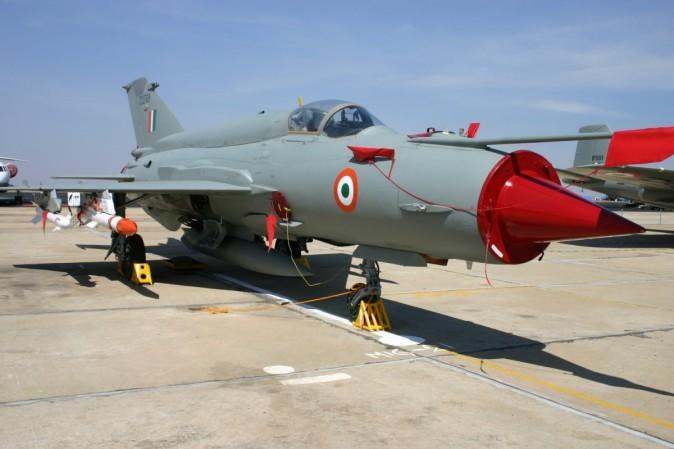![[Representational image] MiG 21 crash lands](https://data1.ibtimes.co.in/en/full/619248/mig-21-crash-lands.jpg?h=450&l=50&t=40)
Last week on Wednesday, another MiG-21 of the Indian Airforce (IAF) crashed in Kangra district of Himachal Pradesh killing its pilot, Squadron Leader Meet Kumar.
Back in April, The martyr was featured in a promotional video shared by the IAF. In the video, the pilot had expressed his gratitude towards the bond he shared with the Soviet era fighter.
"The bond that we share, me and this machine (MiG-21), is very rare. It is more than (the bond with) my wife. We know each other very well. I (have) spent more time with this machine than my wife", Squadron Leader Meet Kumar said while featuring in the video.
But barely two months of the video, the pilot lost his life in a routine sortie.
Minister of State for Defence Subhash Bhamre had informed the Loksabha that a total of 25 accidents involving IAF aircraft were reported since 2015-16. Called as 'safe as a bullock cart" in the late 70s, the aircraft are now called as "The Flying Coffin" and "Widow Maker".
The number of crashes of MiG aircraft is staggering. Since its inception in the Indian Airforce, four decades ago, India has lost more than half of its MiG combat fleet of 872 aircraft. This information was provided to the Rajya Sabha by then defence minister AK Antony in 2012.

What makes the aircraft, which were once was hailed as "the pilot's buddy", so vulnerable to accidents?
1. High Landing Speed
One of the major issues that the aircraft faces is its high landing speed. Some variants of MiG-21 land at a speed as high as 350kmph that makes it not only harder for the pilot to control the aircraft while landing but also prone to crashes.
The seriousness of the higher landing speed of the aircraft can be calculated with the fact that even NASA's spaceship lands at a speed less than 340kmph due to safety purpose
2. Cockpit design
The cockpits of these Soviet-era interceptor fighters are designed in such a way that it's almost impossible for the pilot to have a view of the runway while landing. This makes the job even more difficult as the aircraft is already at a higher touchdown speed
3. Obsolete Airframes
Since its inception in the IAF, the aircraft has gone through a series of upgrades and modifications. A number of variants viz. MiG-21 FL, MiG 21-PF and the most advanced MiG-21 Bison have been developed over the years. But little attention has been given to its airframe which required an overhaul with the increase in weight due to the additional equipment
4. Outdated Spares
The Russian government provided India with the spare parts of the aircraft but over the years the spare parts have failed to live up to the standards of the modern requirements of the aircraft. Production of many of its critical parts has been stopped forcing the IAF to operate the aircraft with the obsolete parts
5. Laggard maintenance and System Malfunctions
The maintenance of the aircraft is the responsibility of the Hindustan Aeronautics (HAL), which has failed to properly maintain the aircraft. Mid-air malfunction of the aircraft is a common reason for the frequent crashes.
The Indian Air Force is in a dire need of a fighter aircraft.The IAF is currently operating at 31 fighter squadrons as against the required 42 squadrons to fight a two-front war against China and Pakistan.

















